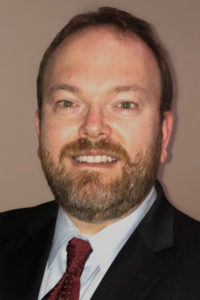
After decades of education and outreach, the medical community and the public generally recognize the importance of bystander CPR in improving the chances of survival for patients suffering from cardiac arrest. Now a national campaign launched by the White House in 2015 seeks to spread similar awareness about the importance of immediate hemorrhage control for trauma patients.
This Tuesday morning, that campaign will be the focus of a session titled Stop the Bleed: Cutting-Edge Science, Education, and Outreach Empowering the Public to Save Lives. The session will take place at 10:45 am in room 278 of the convention center.
Session chair Matthew Levy, DO, who is an associate professor of emergency medicine at Johns Hopkins Medicine, said he and others associated with the Stop the Bleed program feel passionately that people need to know how to recognize and intervene when they see life-threatening hemorrhage.
“If we can teach people how to identify and intervene upon severe bleeding, we can reduce deaths from hemorrhage and increase survival,” he said. “Severe bleeding represents the single biggest cause of preventable death in trauma patients. Trauma is a significant cause of mortality and morbidity and the single biggest cause of death of people under age 44. There are a lot of people we could help with early hemorrhage control if bystanders chose to intervene.”
The session will begin with a look at the battlefield underpinnings and origins of the Stop the Bleed campaign. Craig Goolsby, MD, MEd, FACEP, who is an associate professor and vice chair of education in the department of military and emergency medicine at Uniformed Services University, will introduce the program and the problem—life-threatening hemorrhage.
“While this program comes from lessons learned initially by the U.S. military on the battlefield, when translated to the civilian population, the same key concepts hold true,” Dr. Levy said. “When someone is bleeding severely, the sooner we do something about it, the better their chance of survival. Stop the Bleed is a multidisciplinary initiative designed to enable and empower everyday people to recognize what severe bleeding looks like and what to do about it—from compressing wounds to using tourniquets—until help arrives.”
Following Dr. Goolsby’s introduction, Dr. Levy, who is also medical director for Howard County (Maryland) Fire and Rescue, will discuss how to implement a Stop the Bleed in a community and share his experiences with incorporating the training into a public school system. His talk will include information on how to secure funding, implementation strategies and deployment, and how to train first responders, school staffs, and students.
Finally, a team from Geisinger Medical Center, will teach the Stop the Bleed course—giving attendees the tools they need to respond to life-threatening bleeding while showing them how to educate others to do the same.
In addition to practical skills, attendees will hear data showing the benefits of early intervention in life-threatening hemorrhage situations.
For example, Dr. Levy said one study found a nearly six-fold survival increase in patients who received a tourniquet before they reached the hospital. He said there is also a tremendous amount of battlefield data from the U.S. Department of Defense and a growing body of civilian data, including data about how to best teach people to treat severe bleeding.
“Given the impressive reach and membership of CHEST, its members are uniquely positioned to be part of this and help bring Stop the Bleed to their communities,” Dr. Levy said. “The physicians, nurses, and other allied health professionals that are part of this organization may encounter severe bleeding not only in clinical practice but also in everyday life. Plus, any health care provider who has had the training is then qualified to teach others and spread the word. So, there’s a double benefit.”





